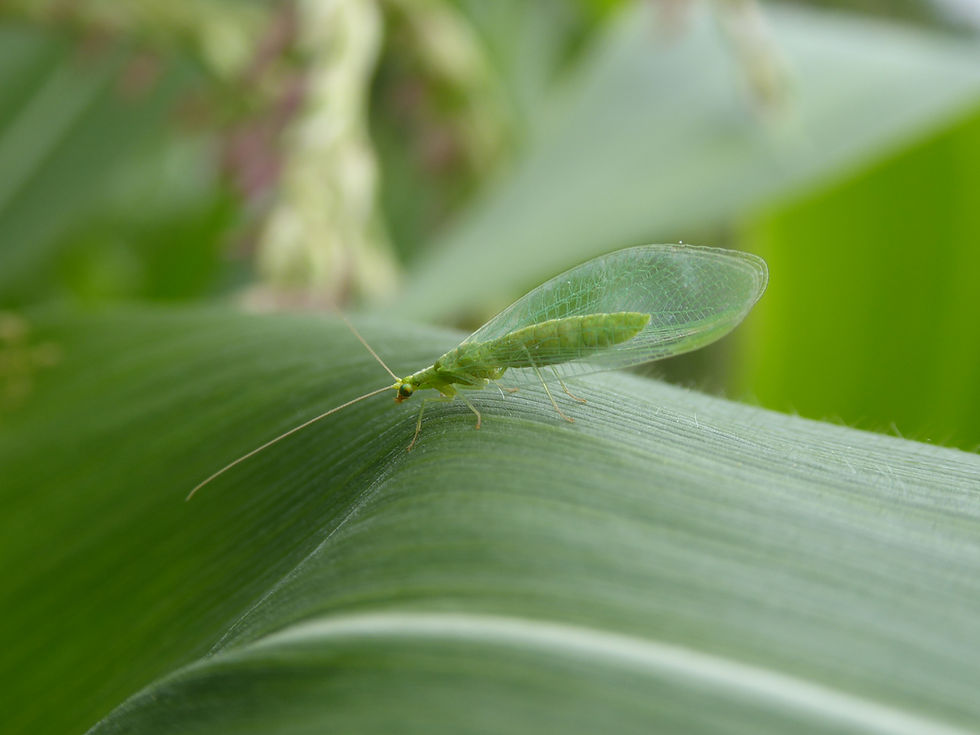Biological pest control agent profiles: Green lacewings (Chrysoperla spp.)
- Miguel M.LS.
- Jun 13, 2021
- 2 min read
Updated: Dec 20, 2021
‘Green lacewings’ is one of the names commonly given to the insects of the genus Chrysoperla, in turn a member of the family Chrysopidae (remember, it’s kingdom – phylum – class – order – family – genus – species), called ‘lacewings’ because of their delicately ornamented wings, which are translucent and present a complicated pattern that resembles lace. Lacewings, and especially green lacewings, can be some of the most ferocious predators of damaging insects that there are; especially since they are generalist predators: they’ll eat everything from mealybugs to spider mites and grasshoppers. They are predators only at their larval stage, becoming harmless nectar and pollen eaters once they reach adulthood. Far from becoming useless, though, this is the stage of their lives when the attention of the organic grower shifts towards giving them a space to live and lay the eggs for the next generation of lacewings. They’re also pollinators at this stage, thus doubly benefitting the crops.

An adult specimen of Chrysoperla carnea.
One single larva of lacewing insects can eat up to three hundred aphids during its lifetime, which means that just ten larvae can consume three thousand aphids; a hundred larvae, thirty thousand; and a thousand larvae of lacewing insects can consume the incredible amount of 300,000 aphids over the course of two or three weeks. Each adult can lay around 200 eggs, so the math adds up to a rather quick control of any soft-bodied insect pest, as long as the environment is diverse enough with other sources of food to actually sustain the lacewings across generations. Otherwise, augmentative techniques for their usage will have to be applied (though they’ll probably still be very much worth it!).

A larva of Chrysoperla carnea (imagine seeing that coming towards you as an aphid!)
AGENT PROFILE
Common name(s): Green lacewings, common lacewings.
Often-used species: Chrysoperla carnea, Chrysoperla rufilabris.
Type of predator: Generalist.
Potential damaging effects: None registered.
Interesting literature on its usage: Against sucking pests of tomatoes (2020), against the parasite of olive trees Saissetia oleae (2020), against mealybugs that attack cassava plants (2017), against the Brazilian species of thrips Enneothrips flavens (2014), against lettuce aphids and western flower thrips (2013), against the whitefly Enneothrips flavens (2008), a methodology of its application in the field (2016).
Comentarios